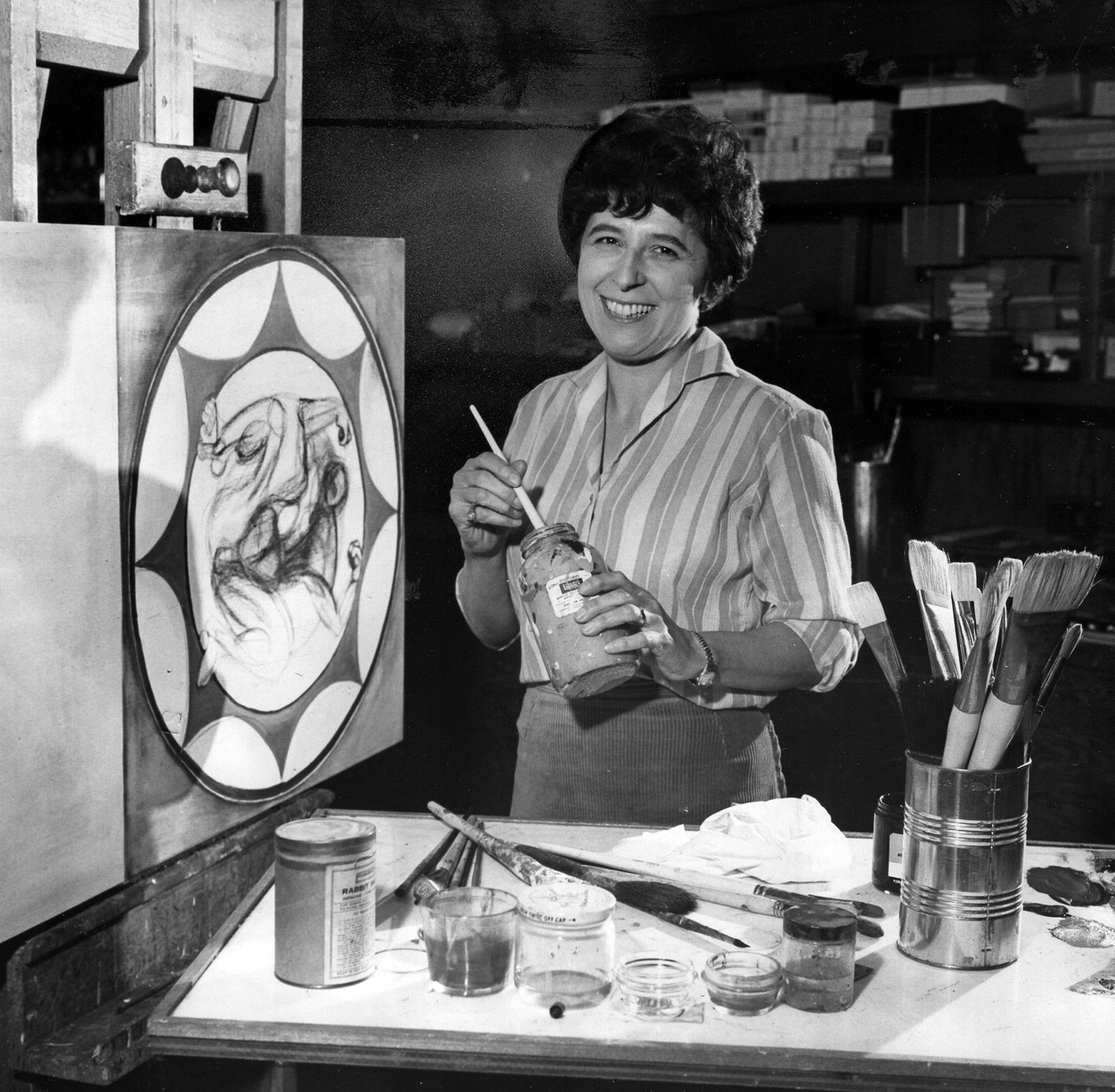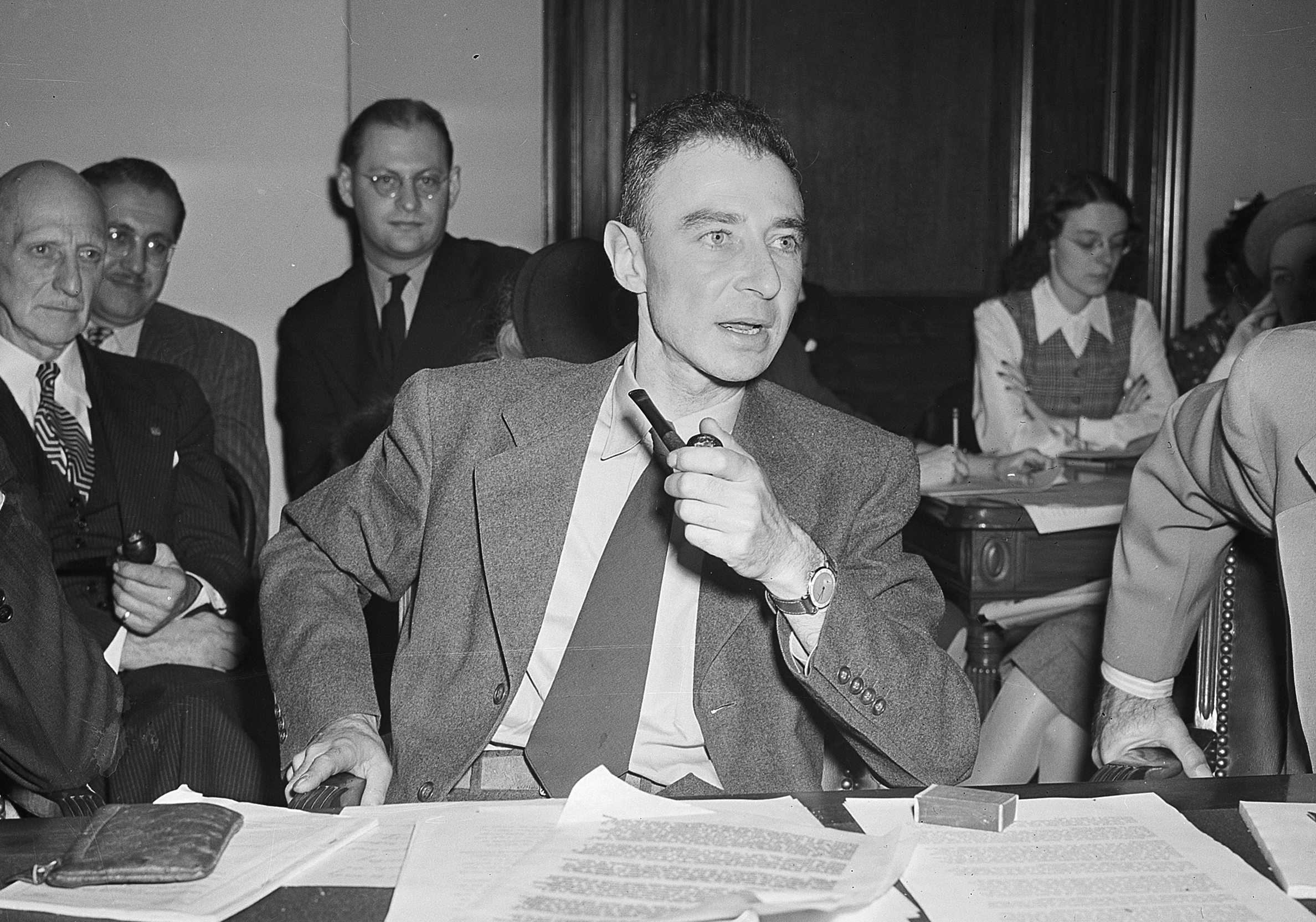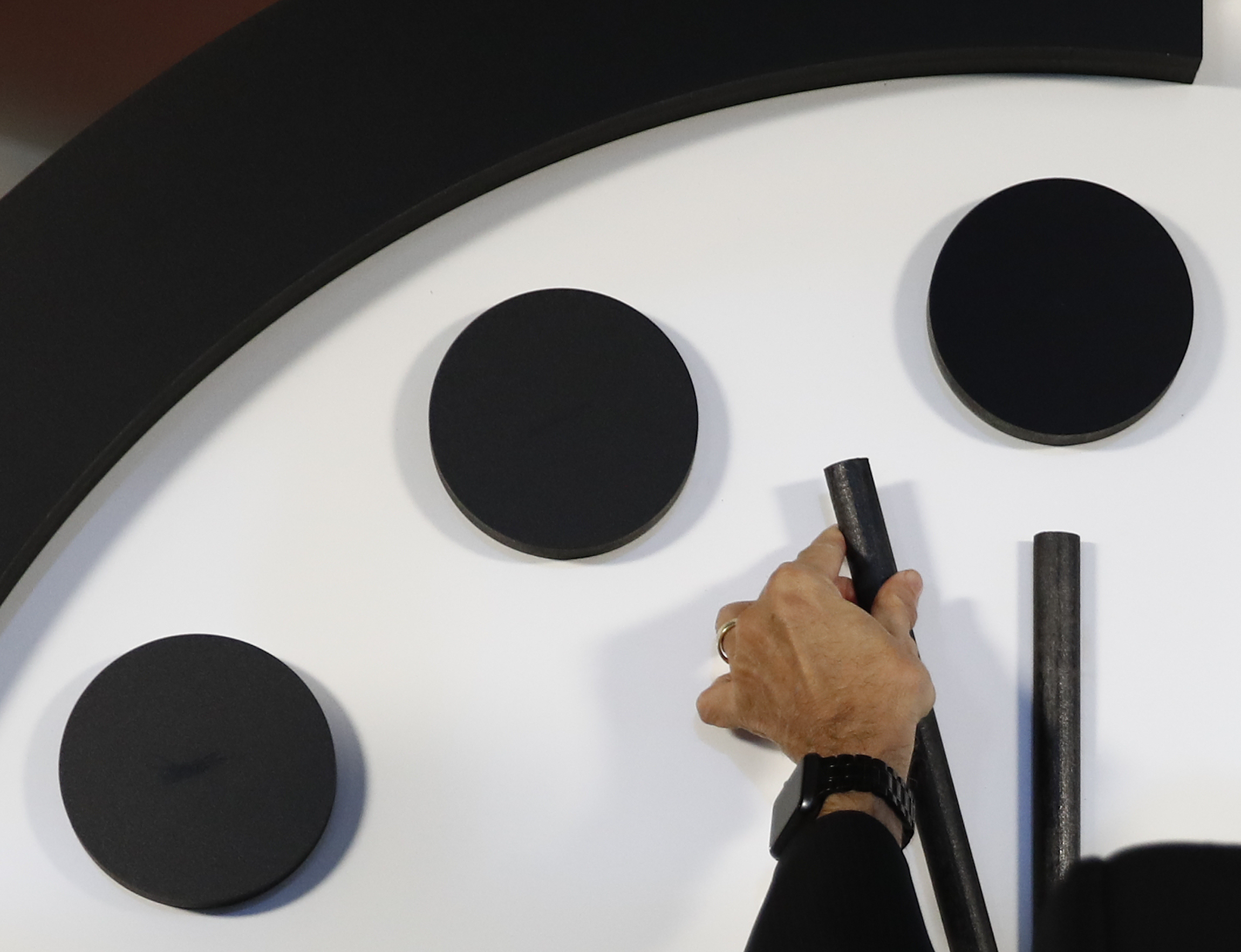Doomsday Clock ticks on as threats to life improve
CHICAGO — Martyl Langsdorf designed only one journal cowl, however it has had appreciable endurance. A prolific painter of summary and figurative canvases, she was commissioned 75 years in the past by the scientists who constructed the atomic bomb that ended World Conflict II. By 1947 the Chilly Conflict was on, they usually wished to alert People to the hazard of a nuclear confrontation with the Soviet Union.
They hoped to “frighten males into rationality,” mentioned Eugene Rabinowitch, a biologist and the primary editor of the Bulletin of the Atomic Scientists.
To specific that goal visually, Langsdorf performed with varied photographs.
“Probably the most important of all was a sketch of a clock, which I made on the 8-by-11-inch again of a sure copy of Beethoven’s Piano Sonatas,” she recalled. “A clock in white paint on the black binding of the Sonatas.”
A clock symbolizes urgency — and her Doomsday Clock did so emphatically by being stripped right down to the necessities. 1 / 4 part of a circle with the hours marked by dots, its lengthy hand set at seven minutes to midnight. Its title is a riff on the biblical prophecy of the day the world will finish.
In 1949, Rabinowitch superior the clock’s massive hand to a few minutes earlier than midnight. The federal government was downplaying a nuclear explosion detected within the Soviet Union, however Rabinowitch mentioned, “the distant rumbling of the primary Soviet atomic bomb exhibits the world nicely superior towards the abyss of an atomic struggle.”
From then on, the Affiliation of Atomic Scientists has yearly introduced if the Doomsday Clock has moved towards or away from catastrophe. This 12 months’s “reveal” shall be on Thursday on an actual clock within the foyer of its workplaces on the College of Chicago’s campus.
Robert Rosner, who will make the announcement Thursday, hasn’t seen “Do not Look Up,” Hollywood’s riff on a doomsday state of affairs a few pair of younger scientists vainly alerting the president to a meteor headed smack on the Earth.
“I’ve run into that perspective of politicians too typically,” mentioned Rosner, chairman of the committee that decides the lengthy hand’s placement.
In a 2019 article in Artwork & Object, Charlotte Hecht wrote that the Doomsday Clock mirrored the “crosscurrents of modernism, trade, and science that ran by way of town at midcentury.” Trendy European design had been transplanted to Chicago by the architect Mies van der Rohe, who proclaimed: “Much less is extra.”
Langsdorf arrived in Chicago in 1943, when her physicist husband was employed by the Manhattan Mission, the atom-bomb experiments hidden beneath the stands of the College of Chicago’s soccer discipline.
Langsdorf and her husband moved in a creative and mental circle that included van der Rohe’s daughter, a Chicago Artwork Institute curator. They lived in an condominium beforehand occupied by the physicist Edward Teller earlier than he was transferred to Los Alamos, N.M., the place the bomb was to be examined.
Teller and others who labored on the Manhattan Mission have been racing to get such a formidable weapon earlier than Hitler’s scientists did. They hadn’t time to contemplate if the bomb may be a two-edged sword. Its damaging energy was solely vaguely identified.
As a graduate pupil, James Sturm labored on Enrico Fermi’s experiments beneath the soccer stadium.
“For Fermi’s closing experiment, a ‘suicide squad’ of graduate college students was positioned above stacks of uranium armed with bottles of a neutron absorbing sodium resolution to be poured over the pile if it ran wild,” Sturm advised the Chicago Tribune in 1992.
When a bomb was examined in 1945, its superior energy was revealed, and the Manhattan Mission’s scientists wrestled with the thorny moral challenge of the way it needs to be used.
About 150 of them signed petitions to President Harry Truman. They have been primarily based on a memorandum referred to as the Franck Report, from its chief writer, James Franck, a German physicist who moved to the U.S. when Hitler took energy.
“Nuclear bombs can’t probably stay a ‘secret weapon’ on the unique disposal of this nation, for quite a lot of years,” the Franck Report asserted. “We imagine that these issues make the usage of nuclear bombs for an early, unannounced assault towards Japan inadvisable.”
Germany having surrendered, Japan was the remaining goal for an atomic bomb. But when its energy have been demonstrated by dropping it on some barren island, america would have the ethical authority to name for worldwide management of atomic weapons.
A long time afterward, Howard Gest, who had signed the petition, puzzled what Truman considered it. After in depth analysis, Gest, an Indiana College professor, concluded the petitions by no means reached Truman.
Memoirs of Truman’s aides advised they felt that, as he had determined to bomb Japan, he did not must see the scientists’ petitions.
Gest discovered confirming proof within the Nationwide Archives: “A 9-by-12-inch envelope, addressed by hand to the president, was torn open roughly,” an accompanying archivist’s observe reported. Nonetheless inside was a web page of signatures of the scientists’ petition.
After atomic bombs devastated Hiroshima and Nagasaki, killing 214,000 human beings, J. Robert Oppenheimer, who led the Manhattan Mission, tried to make the scientists’ misgivings heard. In a White Home assembly with Truman, he put the problem bluntly.
“Mr. President, I really feel I’ve blood on my arms,” Oppenheimer mentioned. That comment infuriated Truman, successfully ending the dialog. He advised his employees he by no means wished to see “that crybaby scientist ” in his workplace ever once more. Their alternate was reported in a number of books about whether or not the A-bomb ought to have been used.
The federal government had the scientists’ petitions stamped “Secret,” preempting any try to make them public. That satisfied a bunch of Manhattan Mission alums that they wanted to take their case on to the American folks, and Langsdorf was employed to create an icon of their effort.
In 2021, her drawing accompanied the Bulletin of the Atomic Scientists’ on-line announcement that the clock was set to 100 seconds earlier than midnight.
“Humanity continues to face two simultaneous existential risks — nuclear struggle and local weather change — which are compounded by a menace multiplier; the persevering with corruption of the knowledge ecosphere on which democracy and public decision-making rely,” the editors mentioned.
In 2007, that they had added non-nuclear components, corresponding to international warming and genetic engineering, to their checklist of threats to civilization. A Tribune editorial proclaimed this to be “Doomsday Creep,” noting these issues “do not have anybody scurrying beneath the desk.”
Even so, the journal continues to make use of a broad class of points when it determines the setting of the Doomsday Clock’s minute hand. The clock itself has lengthy since traveled far and huge.
“The clock has a lifetime of its personal now,” Langsdorf mentioned in a 2007 interview.
The Doomsday Clock is heard within the lyrics of Pink Floyd’s 1983 recording “Two Suns within the Sundown.” A foreboding clock seems within the background of Sting’s 1985 music video “The Dream of the Blue Turtles.”
It was featured in Yael Bartana’s play “What if Ladies Dominated the World” and in televised episodes of “Madame President” and “Legal Minds.”
The digital reward store of the Bulletin of the Atomic Scientists gives Doomsday T-shirts, face masks and occasional mugs.
Langsdorf’s work have been acquired by the Nationwide Museum of American Artwork, the Hirshhorn Museum, the St. Louis Artwork Museum and the Nationwide Gallery of Artwork.
But till her loss of life in 2013 at 96, individuals who met her would typically say: “You are the one who created the well-known clock.” She can be requested what proof led her to set it at seven minutes to midnight.
Her inspiration was aesthetic, not scientific, in accordance with the web site of the Bulletin of the Atomic Scientists.
“It appeared the proper time on the web page,” Langsdorf mentioned. “It suited my eye.”
 Artist Martyl Langsdorf in 1967. (File photograph/Chicago Tribune/TNS)
Artist Martyl Langsdorf in 1967. (File photograph/Chicago Tribune/TNS) FILE-This Oct. 17, 1945 file photograph Dr. J. Robert Oppenheimer of the New Mexico laboratories of the atomic bomb making venture, testifies earlier than the Senate Army Affairs Committee in Washington. The U.S. Division of Vitality has declassified paperwork associated to the Chilly Conflict listening to on Oppenheimer who directed the Manhattan Mission and was later accused of getting communist sympathies. The division final week launched transcripts of the Fifties hearings on Oppenheimer’s safety clearance, offering extra perception into the beforehand secret world that surrounded improvement of the atomic bomb. (AP Photograph,File)
FILE-This Oct. 17, 1945 file photograph Dr. J. Robert Oppenheimer of the New Mexico laboratories of the atomic bomb making venture, testifies earlier than the Senate Army Affairs Committee in Washington. The U.S. Division of Vitality has declassified paperwork associated to the Chilly Conflict listening to on Oppenheimer who directed the Manhattan Mission and was later accused of getting communist sympathies. The division final week launched transcripts of the Fifties hearings on Oppenheimer’s safety clearance, offering extra perception into the beforehand secret world that surrounded improvement of the atomic bomb. (AP Photograph,File) Robert Rosner, chairman of the Bulletin of the Atomic Scientists, strikes the minute hand of the Doomsday Clock to 2 minutes to midnight throughout a information convention on the Nationwide Press Membership in Washington, Thursday, Jan. 25, 2018. ( AP Photograph/Carolyn Kaster)
Robert Rosner, chairman of the Bulletin of the Atomic Scientists, strikes the minute hand of the Doomsday Clock to 2 minutes to midnight throughout a information convention on the Nationwide Press Membership in Washington, Thursday, Jan. 25, 2018. ( AP Photograph/Carolyn Kaster)Share this content:





